2007 Mitsubishi Outlander brings sport sedan dynamics to compact sport-utility vehicle segment; performance credentials include 220 Hp V-6, 6-speed Sportronic(R) transmission and aluminum roof
Mitsubishi designed its second-generation 2007 Outlander compact sport-utility vehicle to surprise and delight the driver with handling dynamics, stability and a level of driver engagement that are uncommon in the segment. The 2007 Outlander is based on a new global performance-engineered platform that will also form the foundation for the next-generation Mitsubishi Lancer and Lancer Evolution models.
All Outlander models for 2007 will be powered exclusively by a new 220 hp aluminum V-6 engine, helping it stand out in a segment where most vehicles offer 4-cylinder engines as standard. The California-emissions V-6 will be the first in the compact SUV segment to be P-ZEV certified The new V-6 is teamed to a 6-speed Sportronic(R) automatic transmission, with a sport mode that enables manual shifting using the floor console shift handle or a feature more commonly seen on exotic sports cars, and a first for the compact SUV segment: available magnesium Sportronic steering wheel paddle shifters.
Each of the two trim lines offered for the 2007 Outlander, the well equipped LS and the sport/luxury XLS, will be available with standard front-wheel drive or with available electronically controlled 4-wheel drive system -- All-Wheel Control (AWC). Mitsubishi's All-Wheel Control philosophy for Outlander combines electronically controlled 4-wheel drive with Active Skid and Traction Control and a tuned suspension, plus an aluminum roof that lowers the center of gravity for better handling response.
"The 2007 Outlander draws on the strong Mitsubishi performance heritage and its 'Driven-to-Thrill' mandate to give the compact SUV customer a new level of driving enjoyment," said Dan Sims, general manager, Mitsubishi R&D America, Design Center. "Even more than its impressive list of performance features might suggest, the 2007 Outlander is a supremely well balanced package."
Even the interior design contributes to the Outlander's performance character, with deeply contoured front bucket seats and motorcycle-style instrument panel gauges that suggest "sports car" more than sport-utility.
Sport-Tuned Platform (and Attitude)
The engineering that went into making the 2007 Outlander a driver's SUV reflects Mitsubishi's renowned motorsports expertise. Mitsubishi recently scored its sixth consecutive win in the Paris-to-Dakar off-road endurance race in a special competition-built Montero SUV.
The 2007 Outlander is built around Mitsubishi's next-generation Reinforced Impact Safety Evolution (RISE) unibody design. The highly rigid structure, which makes extensive use of high-strength steel, allows for sport-oriented suspension tuning while also providing a smooth, compliant ride. The front suspension employs strut tower bars to enhance lateral rigidity for precise steering response. The rear multilink suspension provides an excellent balance of handling performance and ride comfort.
The 2007 Outlander's aluminum roof removes 11 pounds compared to a conventional steel roof, and is three times more effective at lowering a vehicle's center of gravity than other aluminum panels, such as an engine hood, would be. A lower center of gravity plays a major role in reducing body roll in handling maneuvers and enhancing steering response; the aluminum roof achieves these goals without affecting ride quality, as stiffer suspension would.
A longer wheelbase (105.1 in. vs. 103.3 in. for current Outlander) and wider track - in conjunction with the aluminum roof - contribute to enhanced stability in the 2007 Outlander.
The Outlander LS models feature standard 16-in. steel wheels with 215/70 R16 tires, with alloy wheels available as an option. On Outlander XLS models, standard 18-in. aluminum-alloy wheels with 225/55 R18 all-season tires further enhance handling response.
The standard 4-wheel disc anti-lock braking system (ABS) integrates electronic brake-force distribution (EBD), which automatically adjusts front/rear brake proportioning based on vehicle load. The standard tire-pressure monitoring system alerts the driver to inadequate tire pressure, which can lead to a potentially hazardous driving condition.
All-New 220 hp MIVEC V-6
The 2007 Outlander's all-new 3.0-liter SOHC V-6 engine uses aluminum for its cylinder block, cylinder heads, and oil pan. The new 4-valve-per-cylinder V-6 produces 220 hp at 6,250 rpm and 204 lb.-ft. of peak torque at 4,000 rpm, with nearly 90 percent of peak torque available from just 2,000 rpm. Combined with the optimized ratios of the 6-speed transmission, this performance curve gives the new Outlander outstanding response in all driving situations.
The Mitsubishi Innovative Valve-timing Electronic Control (MIVEC) system controls valve timing and lift to optimize performance at all engine speeds. Despite its technical sophistication, the system's basic operation can be expressed quite simply: In the new V-6, MIVEC alters intake camshaft phasing, tailoring engine performance in response to driver input and engine load.
With MIVEC, the phase changes occur automatically at certain engine speeds. At lower engine speeds, MIVEC operates with what is effectively a smaller cam profile that yields medium lift on the valves to provide stable combustion and lower emissions. When engine speed reaches the switchover point, MIVEC gives the intake valves a longer duration and higher lift to maximize power. MIVEC operation is transparent to the driver, who is simply rewarded with a smooth flow of power.
A sophisticated electronically controlled multi-point fuel injection system ensures precision fuel delivery. The electronic throttle control system (throttle-by-wire) eliminates the mechanical linkage between the accelerator pedal and the throttle plate.
6-Speed Sportronic Transmission and All-Wheel Control (AWC)
The 2007 Outlander V-6 is teamed exclusively with a 6-speed Sportronic automatic transmission with sport mode that enables manual shifting. In LS models, the driver can shift manually with the floor console shifter; Outlander XLS models also feature magnesium Sportronic steering wheel paddle shifters. The driver tugs on the right paddle shifter for upshifts and the left paddle shifter for downshifts. The Sportronic steering wheel paddle shifters are always in optimum position, regardless of steering wheel angle, and the transmission allows paddle shifting even when in "D" mode.
The 2007 Outlander will give the customer a wide choice among vehicle drive modes. Standard front-wheel drive is augmented by the Active Skid and Traction Control system, which includes traction control for better grip on slippery surfaces.
Where some compact SUVs offer 4-wheel drive systems as adjunct features, Mitsubishi applies its All-Wheel Control philosophy to give the 2007 Outlander confident handling capability under the widest variety of driving conditions. This option integrates driver-configurable, electronically controlled 4-wheel drive system with the Active Skid and Traction Control system.
Using a drive-mode dial on the center console, the driver can select "FWD" for best fuel economy; with "4WD Auto" mode selected, the system uses an electronically controlled transfer clutch to automatically and seamlessly route more power to the rear wheels, depending on driving and road surface conditions. The system always sends some power to the rear wheels, and it will automatically increase power at the rear wheels under full-throttle acceleration.
For particularly challenging driving conditions, such as snow, the driver can select "4WD Lock" mode. In this mode, the system still apportions front and rear torque automatically, but enables greater power transfer to the rear wheels.
The transfer system case is made from aluminum and located near the rear differential for optimal weight distribution.
Under all driving modes, the Active Skid and Traction Control system is on and working to help keep the Outlander traveling in the direction the driver is steering. Taking sensor input from the engine's electronic control unit (ECU), wheel speed sensors and a yaw sensor, the ASC system can regulate torque and braking to individual wheels to help maintain vehicle stability.
Premium Warranty
Mitsubishi cars and light trucks are backed by a comprehensive new-vehicle limited warranty that covers the vehicle from bumper to bumper for five years/60,000 miles. In addition, the powertrain is covered by a 10-year/100,000 mile limited warranty, while body panels have a seven-year/100,000 mile anti-corrosion/perforation limited warranty.
The program also includes 24-hour emergency roadside assistance with free towing to the nearest authorized Mitsubishi retailer for warranty-related repairs for five years/unlimited miles.
Technical data, features, options and other equipment listed in this release are based on the latest information available at the time of printing and are subject to change without notice.
Mitsubishi Motors North America, Inc., (MMNA) is responsible for all manufacturing, finance, sales, marketing and research and development operations of the Mitsubishi Motors Corporation in the United States. Mitsubishi Motors sells coupes, convertibles, sedans, a mid-size pickup truck and sport utility vehicles through a network of approximately 540 dealers.
# # #

